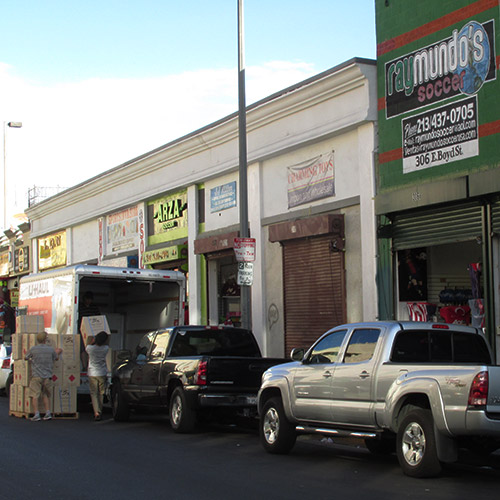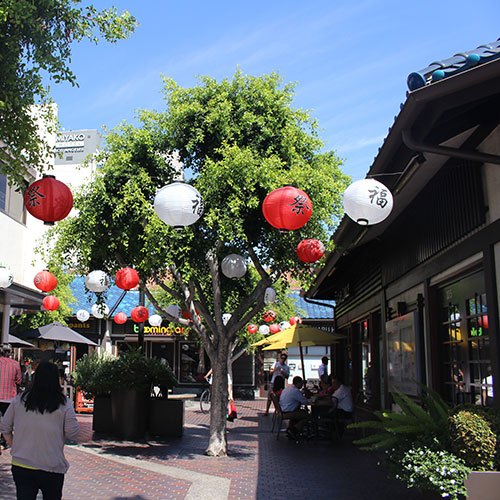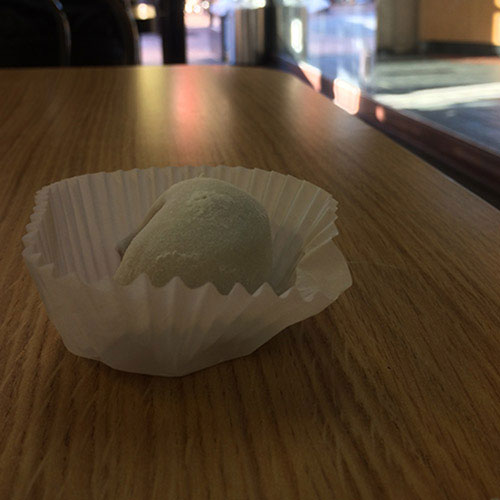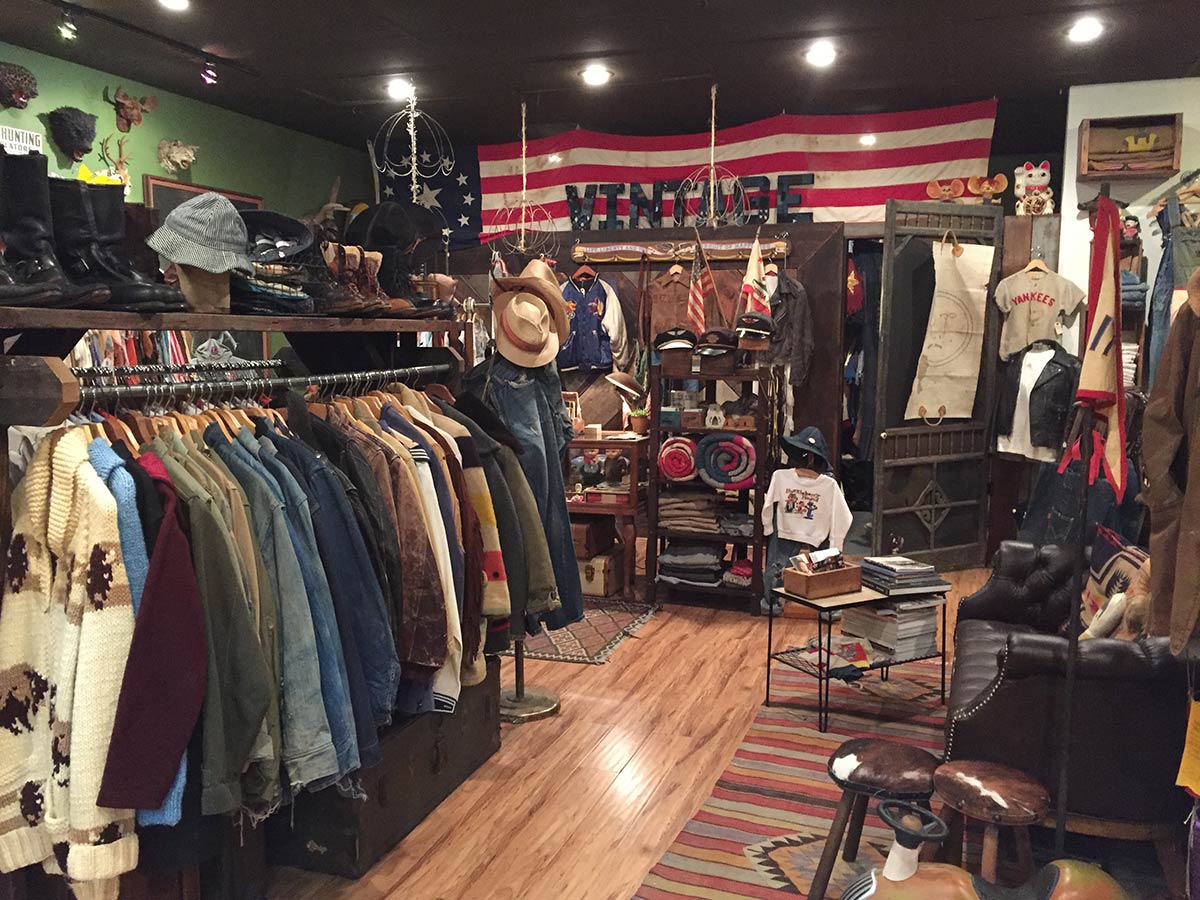
Hunting for gold
Jamie Wong stands behind the counter of her vintage shop, Raggedy Threads, and holds up a brown corduroy jacket. The material is rough and faded in some parts, and there are even few rips in on the back, but Wong is full of admiration as she looks at the jacket.
“It’s all handmade. All the buttons, the big pocket, the little pocket," the 38-year-old store owner said. "Look at the pocket details here. I mean, you can smell it. It’s crazy. And it’s heavy." The coat, a men’s hunting jacket from the gold rush era, is her new favorite piece and the oldest one she has ever found.
“Some people see it, some people don’t, but for me I’ve seen so much stuff that nothing really excites me as much as finding stuff like this. Like old workwear,” she said.
Wong bought the jacket from the children of the original owner, who wore it during the gold rush era. “They’re emailing me right now, still getting more stories,” Wong said. “I was like, ‘Find me pictures, find me anything from this family.’”
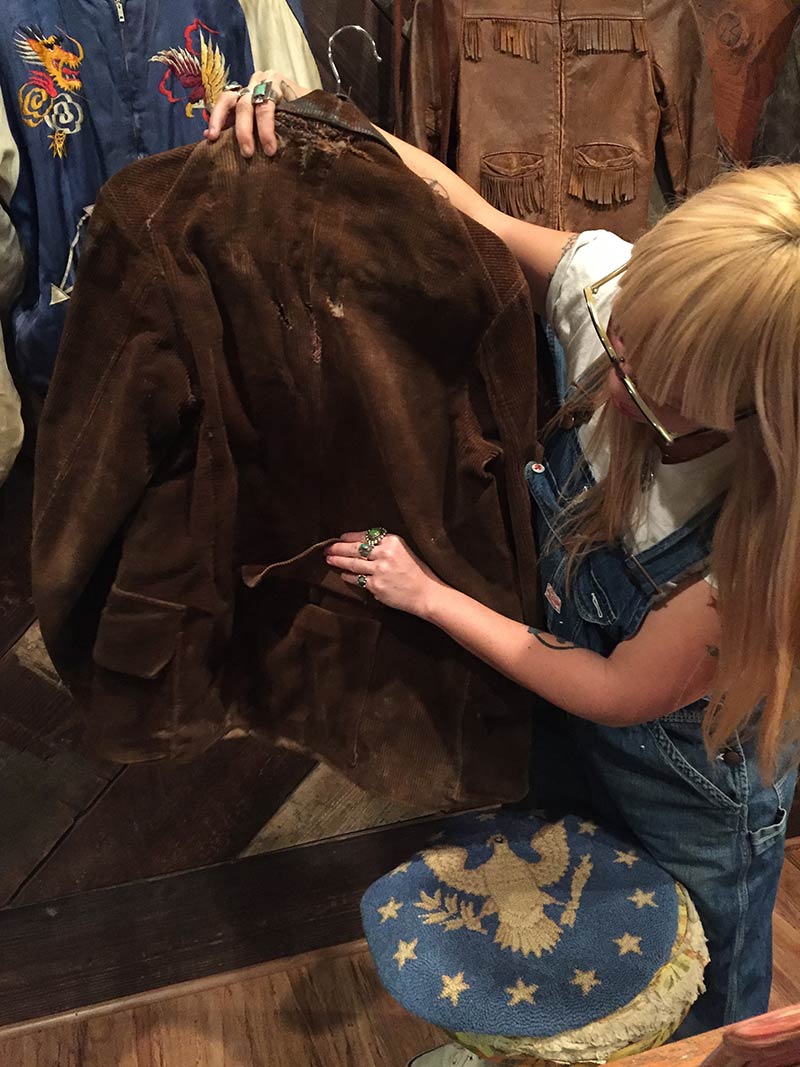
Wong has been collecting these stories since she quit her corporate job and opened Raggedy Threads in 2002. She says the primary thing she looks for in vintage clothing is character, but the stories are just as important.
“It’s even better if I find stuff from the original owners and find a whole story in one piece,” she said. “The military stuff has the most stories because they have their dog tags and their rings and their pins and their bracelets and their pictures… and they write on everything. Letters. Those are my favorite. I can’t sell those though. Those are something I have to keep.”
When Wong first opened her own store, she sold both thrift and vintage clothing because she had trouble finding quality vintage pieces on a limited budget. The growth of her business has allowed her to expand her collection and sell exclusively vintage clothing.
“You do work a little harder to get stuff for cheap obviously. But now I have more connections and I travel more – I don’t stay in California anymore to buy anything. It’s a lot easier,” she said.
Wong travels the world visiting antique shops, attending vintage shows and meeting people who own a lot of old junk. “Usually it’s me going to someone’s giant storage unit – or not even storage, like a big building,” she said. “One of my dealers is in Kansas. She owns about six buildings there. It takes me weeks to go through her stuff. It’s just like clothing to the ceiling.”

Xavier Valentine, who Wong hired as a manager during the summer of 2015, thinks it’s important buyers understand this process when looking at the price tags of the clothes.
“It’s crucial to note that this stuff is bought all over the globe, which is not an inexpensive process,” Valentine said. “You’re paying for a curated experience in which you don’t have to do all of that disgusting hunting. Everything has been laundered and, when applicable, repaired for you.”
Wong took her business overseas for the first time in late November when she opened up a pop-up store in Hong Kong featuring a few of her best pieces. Though China has a smaller demand for vintage clothing than Japan, she thinks she may gain an advantage by entering the market while it’s still developing.
“It’s still a very new thing for that country, so I kind of want to get in there while I can, just to try it out. I don’t know if it’s going to be good or bad,” Wong said. “It’s not like Japan. If I was in Japan, I wouldn’t even worry because vintage is huge over there.”
But Japan’s market for vintage clothing is not the reason Wong settled in Little Tokyo. She originally opened up in Los Angeles’ Arts District and tried two locations before moving to her current storefront in 2009. She loves the variety of fashion styles found in Little Tokyo, and the assortment of customers that variety brings into her store.
“Because I sell kids’ clothes, you have the families – the hip moms – to the 65- to 70-year-old ladies that walk by and they love it. They’ll buy themselves a Victorian dress because it reminds them of their youth,” Wong said. “It’s so mixed.”
She’s never sure what her customers are looking for when they walk in the door, but they usually find it themselves. “I feel like things call to you when they’re meant to be yours.”
